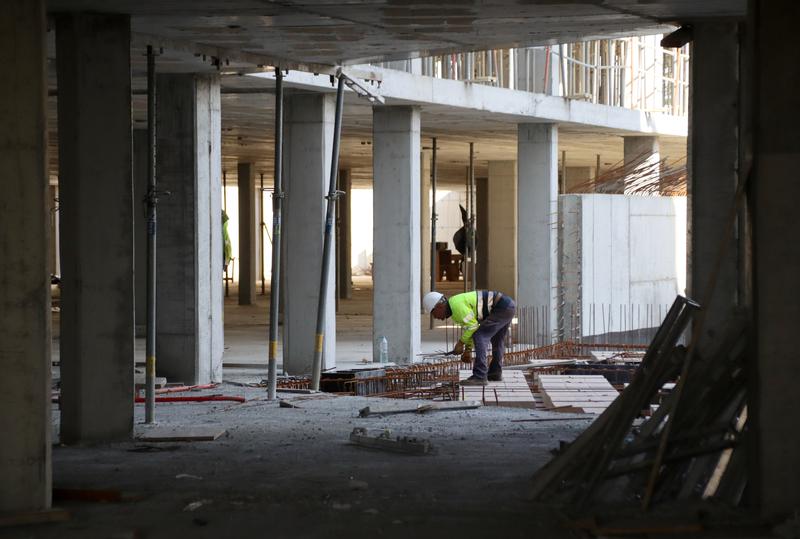Lack of young workers and bureaucracy slowing down construction of new homes
Building in the last decade only 10% of level before bubble crash, despite slight upswing

One of the main reasons why there is a housing crisis in Catalonia right now is a simple lack of housing stock.
A lack of younger workers and too much bureaucracy in the construction industry are holding back the expansion of the housing stock, according to figures within the sector.
The data on the number of homes built each year published by the housing secretary show a drastic fall in construction overall, in spite of a slight upswing in recent years.
In the 1990s, the number of new homes built was 406,636, and this figure rose as high as 631,758 in the following decade.
But when the housing bubble burst the sector collapsed, and only 88,020 houses and flats were completed in the 2010s.
Between 2021 and 2023, a total of 40,214 more homes were added to the housing stock of Catalonia, almost half of the previous decade in just three years.
The construction bubble came at a time that Catalonia’s population was increasing, but while the number of residents has continued to rise, the trend in the pace of construction has been inversely proportional since 2008.
According to Xavier Vilajoana, head of the Association of Catalonia Developers (APCE), the time that elapses between the application for a building permit and tenants moving in is about three years.
He divides his calculations into an initial eight months to obtain the permit, between 18-20 months of construction, and the "post-construction" period, which he says lasts around five months.
He says that "anything to shorten these terms is welcome."
Generational relief
A study by Vilajoana’s association and Pompeu Fabra University (UPF) on residential construction shows that two out of ten workers in this sector were over the age of 55 in 2022. The ratio of under-30s went from 12.4% in 2012 to 9.2% in 2022.
The analysis also points out that the 2008 crisis caused young wage earners to move to other occupations such as hospitality, and warns that this trend has not reversed.
Vilajoana considers that industrialization can help with the lack of generational relief in the sector.
To attract more young people, Vilajoana suggests lowering the age of internships from 18 to 16, an opinion shared by Xavier Garcia, general manager of the construction company Garcia Riera, based in Vila-seca, who warns that at 18 "it's almost too late" to attract young men to construction.
Garcia is committed to "modernizing the image" of the sector and wants to "enhance training." In particular, he feels the industry must "focus on prevention to make the profession safer," because people associate it with certain risks.
The real estate bubble and crash caused "many people to migrate to other sectors" such as automotive and services, Garcia explains, adding that the workforce "is not coming back now." For this reason, he insists on "making the sector more attractive" and suggests, for example, "improving flexibility of working hours."
Even so, construction promoters say "there are not the necessary construction rates" to recruit more labor. Vilajoana says companies will find the workers whenever there are jobs available, but Garcia contradicts this, saying his company has had to reject projects due to a lack of workers. In some cases, he had to reject projects when all of his workers were already working and he could not guarantee the quality he demands.
Construction rates
The construction of new homes is going at an uneven pace throughout Catalonia, with the counties in the rural Pyrenees standing out, with most apartments completed in the last year in proportion to their population.
According to data from the Ministry of Housing, Vall d’Aran leads all of Catalonia, with 297 new homes between last October and this September – a ratio of 28,296 properties for every million inhabitants, while the Catalan average is 1,657. Alta Ribagorça, Cerdanya, and Pallars Sobirà follow, ahead of Garraf and Baix Empordà.
Barcelonès county, which encapsulates the capital city, is below the average, with a ratio of 1,074.